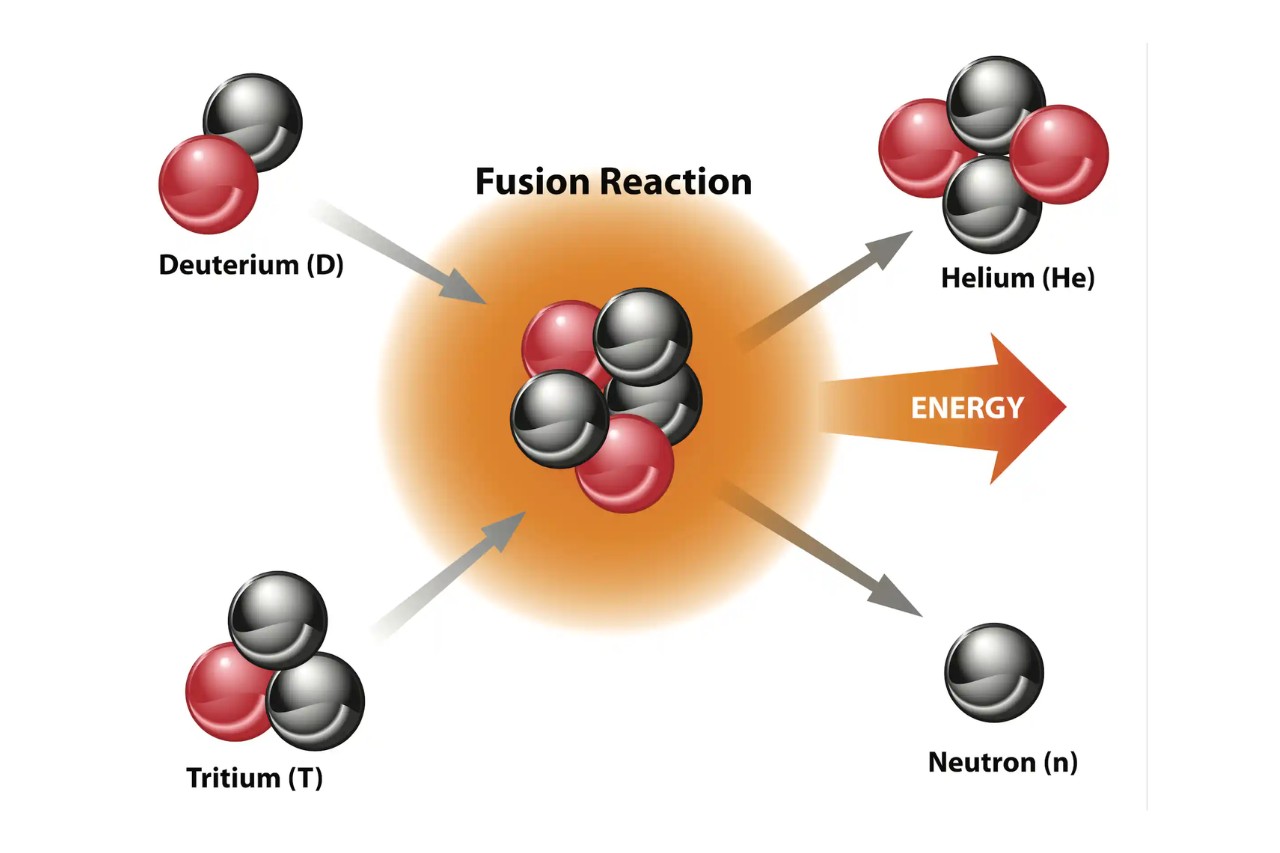
Fusion, the process of combining atomic nuclei to release an enormous amount of energy, is a fascinating phenomenon that has captivated scientists and researchers for decades. This incredible process, which occurs naturally in stars, holds immense potential for solving the world’s energy crisis and unlocking a new era of clean and sustainable power.
In this article, we will delve deep into the world of fusion and explore 20 captivating facts that shed light on this extraordinary process. From the mind-boggling temperatures involved to the intricate mechanisms that make fusion possible, get ready to be astonished by the wonders of this groundbreaking field of study. So, fasten your seatbelts and embark on this thrilling journey through the realm of fusion, where science meets innovation.
Key Takeaways:
- Fusion has the potential to provide limitless, clean energy by replicating the process that powers the sun, offering a sustainable solution to the world’s energy needs.
- Scientists are making significant progress in creating fusion reactors, which could revolutionize space travel and offer a safer, more abundant energy source for the future.
Fusion is the process that powers the sun.
Fusion is the reaction that occurs in the core of the sun, where hydrogen atoms combine to form helium, releasing an enormous amount of energy in the process.
Fusion has the potential to provide limitless clean energy.
Unlike conventional energy sources which produce harmful emissions, fusion has the advantage of being a clean and virtually unlimited energy source.
Scientists are working on creating fusion reactors.
Research is ongoing to develop fusion reactors that can replicate the conditions necessary for fusion to occur on Earth and harness its tremendous energy potential.
Fusion reactions require extremely high temperatures and pressure.
To achieve fusion, hydrogen atoms must be heated to millions of degrees Celsius and placed under intense pressure to overcome their natural repulsion and allow the nuclei to come close enough for the strong nuclear force to bind them together.
The most promising fusion reaction is the deuterium-tritium reaction.
This reaction involves the isotopes of hydrogen, deuterium, and tritium, and has the highest reaction rate and energy yield among the possible fusion reactions.
Fusion offers an abundant fuel supply.
Deuterium can be extracted from seawater, an almost limitless source, while tritium can be bred from lithium, making fusion fuel readily available.
Fusion releases more energy than any other known energy source.
Gram for gram, fusion produces several times more energy than traditional fossil fuel sources like coal or gas.
Fusion reactors produce less radioactive waste compared to nuclear fission reactors.
While fusion reactions do produce some radioactive waste, they produce significantly less and with much shorter half-lives than nuclear fission reactions.
Fusion could offer a solution to the world’s energy crisis.
With its potential for clean, abundant energy, fusion has the capacity to meet the ever-increasing global energy demands sustainably.
Fusion research has made significant progress in recent years.
Scientists and engineers have made substantial advancements in various fusion approaches, bringing us closer to achieving controlled fusion reactions.
The International Thermonuclear Experimental Reactor (ITER) is a major fusion research project.
ITER, a collaboration between 35 countries, aims to demonstrate the scientific and technical feasibility of fusion power on a large scale.
Other fusion research projects include the Joint European Torus (JET) and the National Ignition Facility (NIF).
JET in the UK and NIF in the US are two prominent research facilities dedicated to advancing fusion research and technology.
Fusion reactions can occur with other elements besides hydrogen.
While hydrogen is the most commonly used fuel for fusion, reactions can also take place with other light elements such as helium, lithium, and boron.
Fusion can potentially be used to create elements heavier than uranium.
Under extreme conditions, fusion reactions can generate heavy elements, expanding our understanding of the universe and its composition.
Fusion could revolutionize space travel.
The ability to generate a high-energy, compact power source through fusion could propel us towards more efficient and sustainable space exploration.
Plasma, the fourth state of matter, is crucial in fusion reactions.
In fusion, matter is heated to extreme temperatures, transforming into plasma, where the atoms are stripped of their electrons and can freely move and collide.
Fusion reactions release an immense amount of energy in a very short time.
This energy release can be harnessed for various applications, from electricity production to medical research and industrial processes.
Fusion reactions have the potential to be inherently safe.
Unlike nuclear fission reactions, fusion reactions can be designed to have a self-limiting nature, reducing the risk of accidents or catastrophic meltdowns.
The first controlled fusion reaction was achieved in 1991.
The Joint European Torus achieved the milestone of producing controlled fusion power for a brief moment, marking a significant step forward in fusion research.
Fusion research requires international collaboration.
Given the complexity and scale of fusion research, countries around the world work together to pool resources, knowledge, and expertise for faster progress.
Conclusion
In conclusion, fusion is a fascinating and promising field of study in the realm of chemistry. It involves the process of combining two or more atomic nuclei to form a heavier nucleus, releasing a tremendous amount of energy in the process. Fusion has the potential to provide a clean and almost limitless supply of energy, mimicking the power of the sun. With ongoing research and advancements, fusion has the potential to revolutionize the way we generate electricity and meet our energy needs in the future. The 20 captivating facts about fusion presented in this article provide just a glimpse into the vast possibilities and intricacies of this incredible phenomenon.
FAQs
1. What is fusion?
Fusion is the process of combining two or more atomic nuclei to form a heavier nucleus.
2. How does fusion differ from fission?
Fusion involves combining atomic nuclei, while fission involves splitting atomic nuclei.
3. What is the main source of fusion energy on Earth?
The main source of fusion energy on Earth is the sun.
4. Are there any practical applications of fusion?
Yes, fusion has the potential to provide a clean and almost limitless supply of energy for electricity generation.
5. Is fusion currently being used to generate electricity?
No, fusion is still in the experimental phase, but there are ongoing research efforts towards achieving controlled fusion reactions.
6. How does fusion compare to other forms of energy generation?
Fusion has the advantage of being a nearly inexhaustible source of energy with minimal impact on the environment.
7. What are the challenges in achieving controlled fusion reactions?
The main challenges include achieving the necessary temperature and pressure conditions and maintaining the stability of the fusion reaction.
8. Can fusion reactors produce radioactive waste?
No, fusion reactors do not produce long-lived radioactive waste like nuclear fission reactors.
9. Are there any risks associated with fusion reactions?
While there are risks associated with fusion reactions, such as the high temperatures involved, extensive safety measures are in place to mitigate these risks.
10. When will fusion become a viable source of energy?
It is challenging to predict an exact timeline, but ongoing research and advancements suggest that commercial fusion energy may become a reality within the next few decades.
Was this page helpful?
Our commitment to delivering trustworthy and engaging content is at the heart of what we do. Each fact on our site is contributed by real users like you, bringing a wealth of diverse insights and information. To ensure the highest standards of accuracy and reliability, our dedicated editors meticulously review each submission. This process guarantees that the facts we share are not only fascinating but also credible. Trust in our commitment to quality and authenticity as you explore and learn with us.


